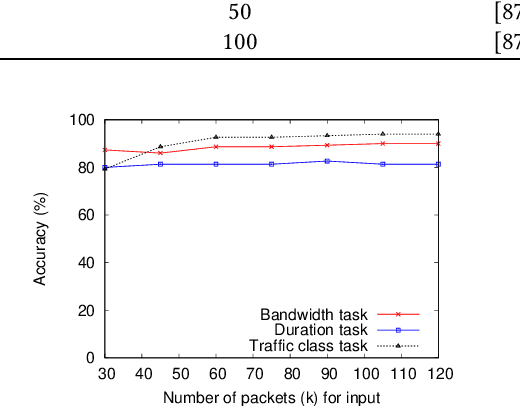Multitask Learning for Network Traffic Classification
Paper and Code
Jun 12, 2019



Traffic classification has various applications in today's Internet, from resource allocation, billing and QoS purposes in ISPs to firewall and malware detection in clients. Classical machine learning algorithms and deep learning models have been widely used to solve the traffic classification task. However, training such models requires a large amount of labeled data. Labeling data is often the most difficult and time-consuming process in building a classifier. To solve this challenge, we reformulate the traffic classification into a multi-task learning framework where bandwidth requirement and duration of a flow are predicted along with the traffic class. The motivation of this approach is twofold: First, bandwidth requirement and duration are useful in many applications, including routing, resource allocation, and QoS provisioning. Second, these two values can be obtained from each flow easily without the need for human labeling or capturing flows in a controlled and isolated environment. We show that with a large amount of easily obtainable data samples for bandwidth and duration prediction tasks, and only a few data samples for the traffic classification task, one can achieve high accuracy. We conduct two experiment with ISCX and QUIC public datasets and show the efficacy of our approach.
 Add to Chrome
Add to Chrome Add to Firefox
Add to Firefox Add to Edge
Add to Edge